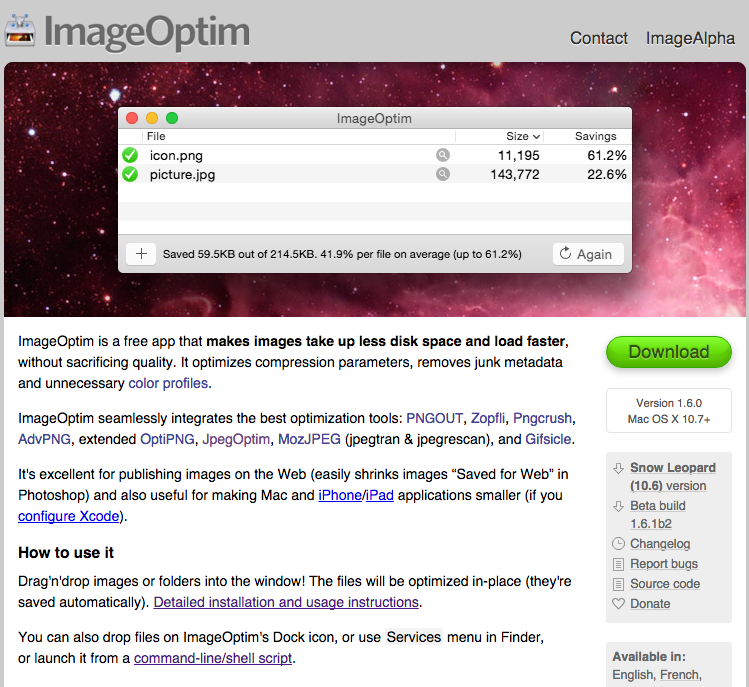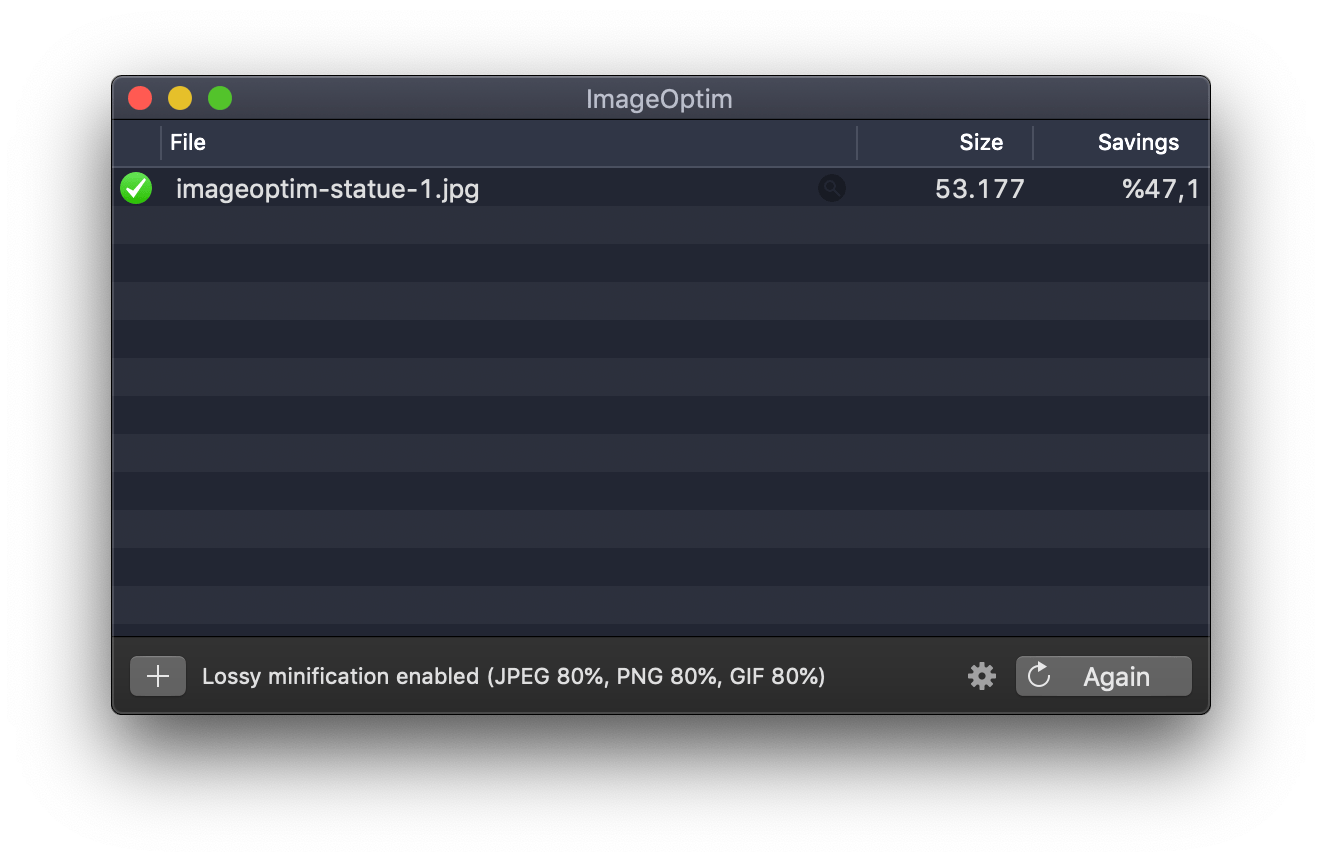

Testing each WordPress image optimizer with PNG files
Imageoptim for jpg free#
That makes it very difficult to recommend Smush unless you pay for it, since the free compression doesn’t compete. Smush finished in last place, but that’s because it uses lossless compression by default in its free version. EDespite using lossy compression, Imagify only shrank the image by ~47%. Sticking with default settings, ShortPixel is the clear winner, coming in with a ~90% reduction in file size using its lossy compression. Note: Lossy compression usually produces the smallest image sizes without losing quality, making it the best option in most situations. Lossless (Paid version required for Lossy) It’s a high-resolution landscape shot with a range of complex colors, and elements we can use to notice any imperfections during the compression.Īnd here are the test results after running the JPG through each WordPress image optimizer: Plugin This is a 3000 x 2000px JPG image with a size of 3.9 MB. Testing each WordPress image optimizer with JPG files This is what we’re interested in most-how each WordPress image optimizer performs right out of the box, without forcing the user to complete any tedious steps.
Imageoptim for jpg install#
By that, we mean that the average user would typically install the image compression plugin and not mess with too many default settings. Though it’s not a perfect comparison, by sticking with the default settings, we’re emulating the experience for a casual user. We’ll stick with the default settings for all plugins and not resize the photos at all.We’ll run two tests: one for JPG files and one for PNGs.But we have a process to make our test as accurate as possible.

In addition, some optimizers provide automated resizing tools, which can cut down the file size drastically.īecause of those differences, it’s hard to come up with an objective comparison. Optimole, on the other hand, optimizes all images based on the same defaults, or the ones set by you. For instance, Imagify has Normal, Aggressive, and Ultra optimization modes. This gets a bit tricky, since some of the WordPress image optimizer plugins offer varying levels of optimization. We want to see how effectively each plugin could optimize the same image. To find the best image optimization plugin for WordPress, we have to put these tools to the test. You can remove any image from the table, or even exclude it from optimization.Go to top Hands-on tests with these image optimizer plugins In the Image Optimizer table you can check all images one by one, you can compare the optimized images with the original one, you can see the original and the actual size of the image as well. If quality of optimized images are ok, and you don’t need the original images anymore, you can remove them one by one, or you can remove all original with one click as well. If you are not satisfied with the image quality, you can restore images one by one, or restore all original images with one click as well. However if you don’t select any images, you can simply click to Optimize Images (All), in that case Swift Performance will optimize all of your images with the actual settings. You can select images and optimize them one by one, which allows you to optimize images with different settings. Swift Performance will find all images from the selected source (including thumbnails and all custom image sizes) and add them to the Image Optimizer table. Once you have set the image source you can start scanning images. It will optimizer JPEG and PNG images and also can generate WebP with our Image Optimizer API. Swift Performance provide a free, unlimited image optimizer module.


 0 kommentar(er)
0 kommentar(er)
